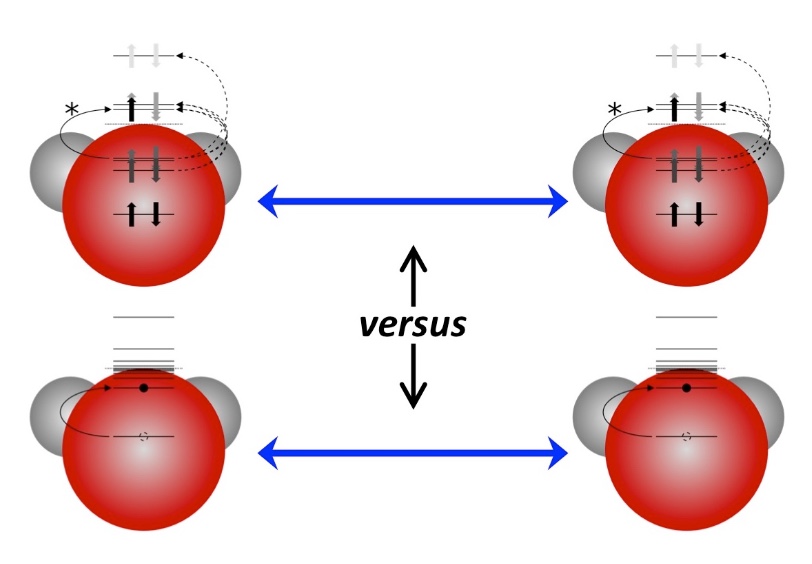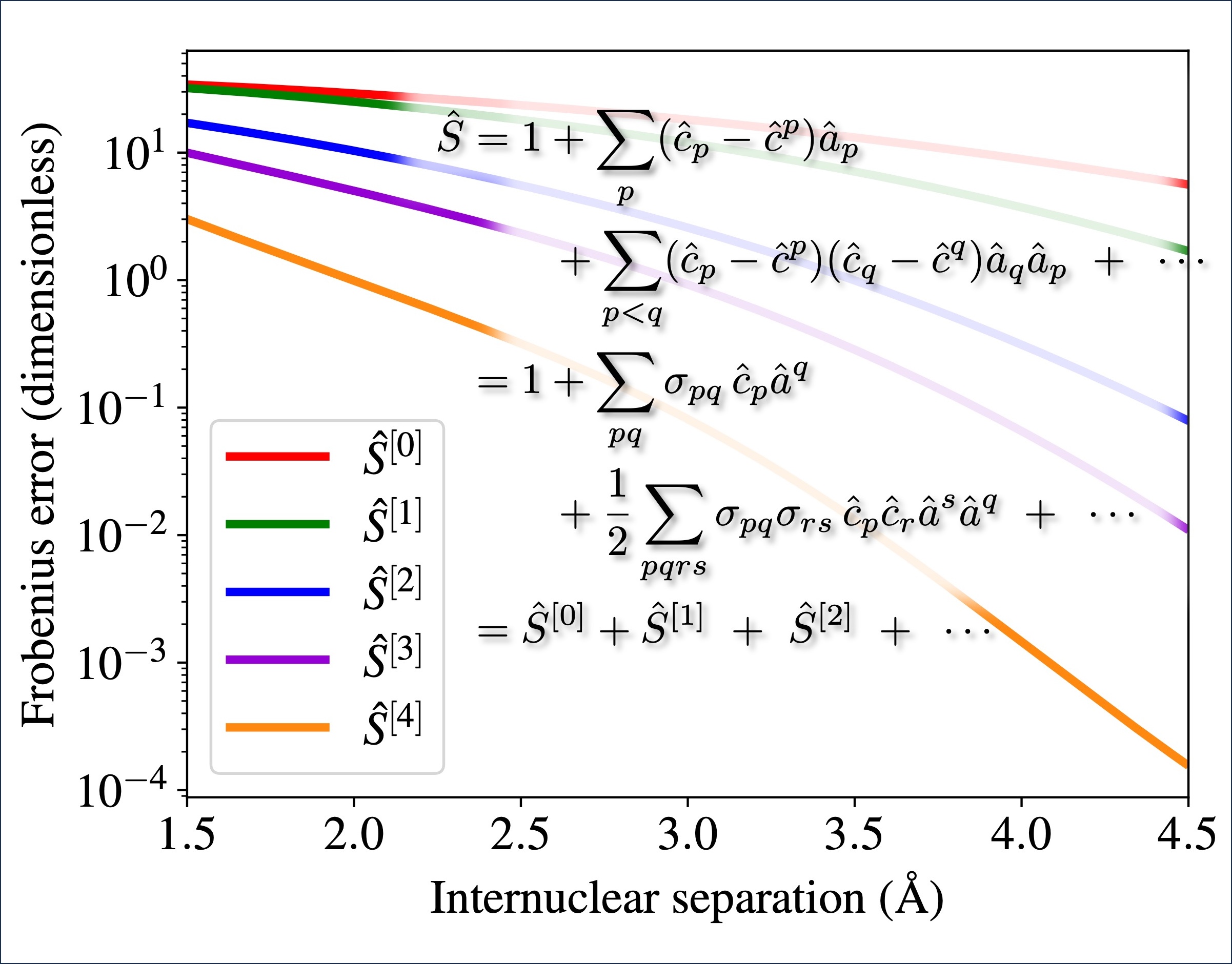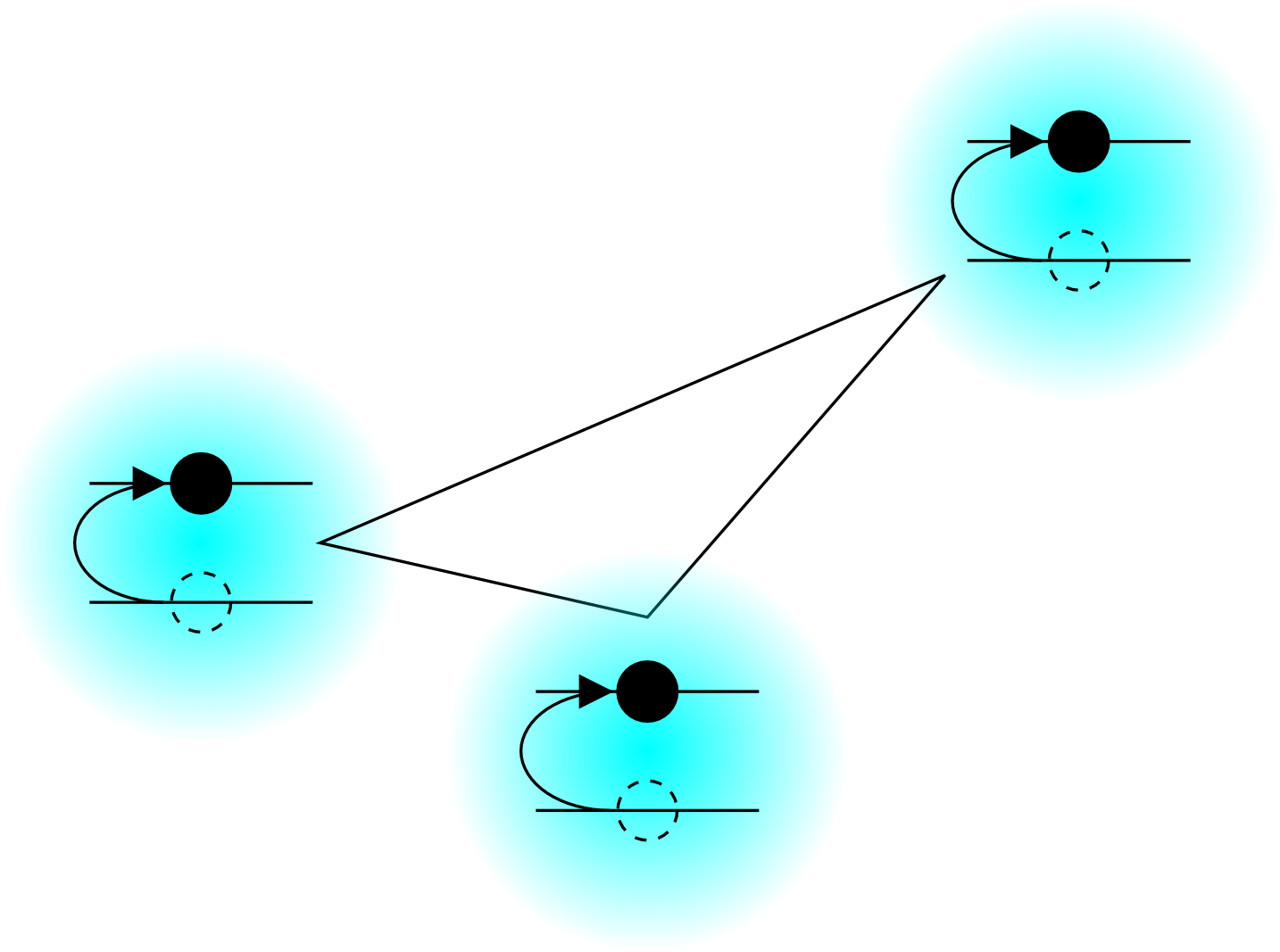One of the major shortcomings of modern fragment-based electronic structure methods is that electron correlation (if included)
is handled at the level of individual electrons.
This project consists of two theoretical pieces.
In the first, the Hamiltonian for a supersystem is rigorously renormalized to be in terms of fluctuations of entire subsystems
(among internally correlated electronic states).
In the second part, familiar electronic structure methods, notably coupled-cluster theory, can be applied to this
renormalized Hamiltonian.
Initial tests of accuracy per cost are quite promising.
The next steps are to begin applying this model to systems of wider interest and implement the theoretically straightforward
generalization to excited states.
Project publications. Click sidebar to see all publications.

|
We show here that the Hamiltonian for an electronic system may be written exactly in terms of fluctuation operators that transition constituent fragments between internally correlated states, accounting rigorously for inter-fragment electron exchange and charge transfer. Familiar electronic structure approaches can be applied to the renormalized Hamiltonian. For efficiency, the basis for each fragment can be truncated, removing high-energy local arrangements of electrons from consideration, and effectively defining collective coordinates for the fragments. For a large number of problems, this has the potential to fold the majority of electron correlation into the effective Hamiltonian, and it should provide a robust approach to incorporating difficult electronic structure problems into large systems. The number of terms in the exactly transformed Hamiltonian formally scales quartically with system size, but this can be reduced to quadratic in the mesoscopic regime, to within an arbitrary error tolerance. Finally, all but a linear-scaling number of these terms may be efficiently decomposed in terms of electrostatic interactions between a linear-scaling number of pre-computed transition densities. In a companion article, this formalism is applied to an excitonic variant of coupled-cluster theory.
|

|
A generalized variant of coupled-cluster theory is described here, wherein the degrees of freedom are fluctuations of fragments between internally correlated states. The effects of intra-fragment correlation on the inter-fragment interaction are pre-computed and permanently folded into an effective Hamiltonian, thus avoiding many redundant evaluations of local relaxations associated with coupled fluctuations. A companion article shows that the electronic Hamiltonians of real systems may always be cast in the form required. Two proof-of-principle demonstrations are presented. One uses harmonic oscillators, for which accuracy and algorithm structure can be carefully controlled in comparisons. The other uses small electronic systems to demonstrate compelling accuracy and efficiency, also when inter-fragment electron exchange and charge transfer must be handled. This framework opens a promising path to build finely tunable, systematically improvable methods to capture precise properties of systems interacting with a large number of other systems. Since this scheme is independent of the quality of the states used for the fragments, it can be arbitrarily detailed in terms of the correlation model used for each. The extension to excited states is also straightforward.
|

|
Utilizing the sparsity of the electronic structure problem, fragmentation methods have been researched for decades with great success, pushing the limits of ab initio quantum chemistry ever further. Recently, this set of methods has been expanded to include a fundamentally different approach called excitonic renormalization, providing promising initial results. It builds a supersystem Hamiltonian in a second-quantized-like representation from transition-density tensors of isolated fragments, contracted with biorthogonalized molecular integrals. This makes the method fully modular in terms of the quantum chemical methods applied to each fragment and enables massive truncation of the state-space required. Proof-of-principle tests have previously shown that an excitonically renormalized Hamiltonian can efficiently scale to hundreds of fragments, but the ad hoc approach to building the Hamiltonian was not scalable to larger fragments. On the other hand, initial tests of the originally proposed modular Hamiltonian build, presented here, show the accuracy to be poor on account of its non-Hermitian character. In this study, we bridge the gap between these with an operator expansion that is shown to converge rapidly, tending toward a Hermitian Hamiltonian while retaining the modularity, yielding an accurate, scalable method. The accuracy is tested here for a beryllium dimer. At distances near equilibrium and longer, the zeroth-order method is comparable to coupled-cluster singles, doubles, and perturbative triples and the first-order method is comparable to full configuration interaction (FCI). The second-order method agrees with FCI for distances well up the inner repulsive wall of the potential. Deviations occurring at shorter bond distances are discussed along with approaches to scaling to larger fragments.
|
|
 go to UOP homepage
go to UOP homepage
 go to UOP homepage
go to UOP homepage
 © Copyright 2012–2025
© Copyright 2012–2025